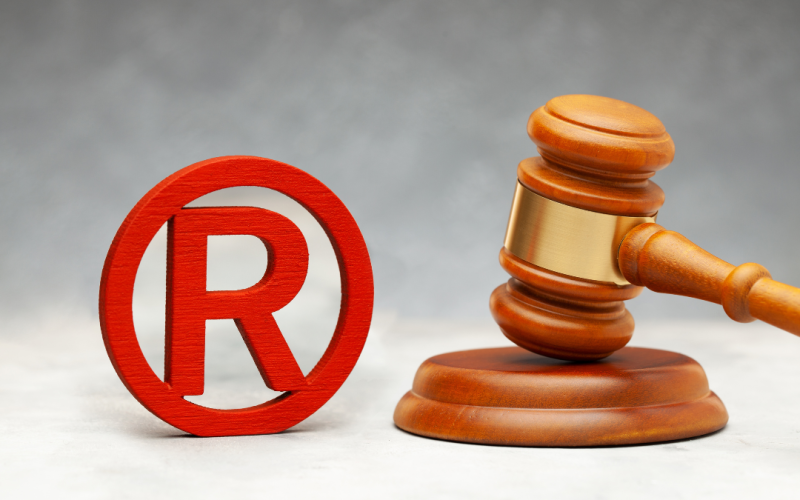In the Philippines, Intellectual Property (IP) is a valuable asset for businesses, creators, and innovators. Protecting your creation ensures that you maintain exclusive rights and can take legal action against unauthorized use. The Symbols TM (™), R (®), and C (©) are integral in this protection process, each representing different types of intellectual property rights. Whether you’re launching a new brand, creating original content, or inventing a new product, understanding these symbols is key to safeguarding your work.
The TM symbol (™) indicates an unregistered trademark, the R symbol (®) signifies a registered trademark, and the C symbol (©) is used for copyright-protected works. Each symbol has distinct meanings and legal implications, and using them correctly can help you avoid potential legal issues in the Philippines.
- Definitions and meanings of the TM (™), R (®), and C (©) symbols.
- Detailed descriptions of trademark and copyright laws in the Philippines.
- Legal implications of using these symbols in business and creative works.
- Practical examples of how these symbols are used in the Philippines.
- Step-by-step guides on registering trademarks and copyrights.
- Why intellectual property protection is vital in the Philippine market.
The TM (™) Symbol: Trademark Protection for Unregistered Marks in the Philippines
The TM symbol (™) stands for “trademark” and is used to indicate that a particular word, logo, symbol, or other identifiers are being claimed as a trademark. In the Philippines, the TM symbol is not an indication of official registration; rather, it signals that the user considers the mark as their trademark. It does not offer the same legal protection as a registered trademark but still serves as a notice to the public of the user’s claim to the mark.
What Does the TM Symbol Represent in the Philippines?
In the Philippines, businesses and individuals can use the TM symbol to mark a brand name, logo, slogan, or other identifiers that they intend to use as a trademark. However, the absence of registration does not limit the claim; it simply means that the trademark has not gone through the formal registration process with the Intellectual Property Office of the Philippines (IPOPHL).
Example: A new Filipino startup selling handmade soaps may use the name “Pure Essence™” on its products. By adding the TM symbol, the business is indicating that it claims exclusive rights to that name, even if they haven’t yet registered it with IPOPHL.
While the TM symbol does not confer the full legal protection that a registered trademark offers, it can still be useful in asserting a claim to the mark. It acts as a deterrent against others trying to use the same or a confusingly similar mark and provides evidence of the business’s intent to protect the mark.
When Should You Use the TM Symbol?
Use the TM symbol when you are actively using a name, logo, or other identifier as a trademark for your goods or services, even if you have not yet filed for registration. It’s common for businesses to use this symbol in marketing materials, product packaging, and advertisements to show that they are claiming rights to the mark.
Legal Implications in the Philippines:
- Unregistered Trademarks: The use of the TM symbol does not grant automatic legal protection, but it allows you to assert a claim over the mark. If you later apply for trademark registration, using the TM symbol in commerce helps establish that you were using the mark first.
- Notice of Claim: The TM symbol serves as a notice to competitors that you claim exclusive rights to the mark. It’s also a way to demonstrate your intent to protect the mark in case of future legal disputes.
The R (®) Symbol: Registered Trademarks
The R symbol (®) is used only for trademarks that have been officially registered with the Intellectual Property Office of the Philippines (IPOPHL). This symbol signals that a trademark has gone through the formal registration process and is protected by law, granting the owner exclusive rights over the mark.

What Does the R Symbol Represent?
In the Philippines, the R symbol indicates that the mark is a registered trademark. Once a trademark is registered, the owner gains legal rights to use the mark exclusively in connection with the goods or services listed in the registration. This gives the owner the ability to take legal action against others who infringe on their trademark.
Example: A well-known Philippine brand, “San Miguel®,” uses the R symbol on its logo to indicate that the mark is officially registered with IPOPHL. This grants the company exclusive rights to use that mark in relation to
Legal Implications of the R Symbol:
In the Philippines, a registered trademark offers several important legal benefits:
- Exclusive Rights: A registered trademark grants the owner exclusive rights to use the mark in connection with their goods or services. No one else can use the same or a confusingly similar mark within the specified market.
- Infringement Protection: The registered trademark holder can take legal action against any party that uses their mark without permission. The owner can file a lawsuit with the Philippine courts or initiate legal proceedings with IPOPHL for infringement.
- Deterrent Effect: The R symbol serves as a powerful deterrent to competitors and counterfeiters, signaling that the trademark is protected by law.
How to Register a Trademark in the Philippines
The process for registering a trademark with IPOPHL includes the following steps:
- Trademark Search: Before filing an application, it’s essential to perform a search to check if a similar mark has already been registered. This can be done using the IPOPHL’s online database.
- File an Application: You must submit a formal application to IPOPHL, including a clear representation of the mark, the goods or services it is associated with, and the applicant’s details.
- Examination: IPOPHL will review the application to ensure the mark complies with requirements and does not conflict with existing registered trademarks.
- Publication and Opposition: Once the trademark passes examination, it will be published in the Intellectual Property Office Journal, giving others the opportunity to oppose the registration.
- Issuance of Certificate: If no opposition is filed or if opposition is resolved, IPOPHL will issue a Certificate of Registration, and the owner can start using the ® symbol.
Legal Risks of Incorrect Use in the Philippines
Using the ® symbol without registering the trademark with IPOPHL is considered illegal. It can result in penalties, fines, and other legal consequences. It is important to ensure your trademark is registered before using the ® symbol.
For step-by-step instructions and detailed information on trademark registration in the Philippines, read here.
The C (©) Symbol: Copyright Protection
The C symbol (©) is used to signify copyright protection, which applies to original works of authorship in the Philippines. This includes literary works, music, films, software, artwork, and other creative content. In the Philippines, copyright protection is granted automatically upon the creation of an original work, provided that it is fixed in a tangible medium.

What Does the C Symbol Represent?
The © symbol alerts the public that a work is protected by copyright law, and that the creator or copyright holder has exclusive rights over the work. This includes the right to reproduce, distribute, and publicly display the work.
Example: A Filipino author who writes a novel may place the © symbol on the title page of their book, followed by their name and the year of creation, to indicate that the work is protected by copyright.
While copyright protection is automatic upon creation, the use of the © symbol serves as a public notice that the work is copyrighted. This can deter others from using the work without permission and can be helpful in enforcing copyright rights in case of infringement.
Legal Implications of the C Symbol
Copyright protection in the Philippines ensures that creators have control over the use of their works:
- Exclusive Rights: The copyright holder has the exclusive right to reproduce, distribute, and perform the work.
- Infringement Protection: If someone uses the copyrighted work without authorization, the copyright holder can take legal action against them for infringement.
- Public Notice: The use of the © symbol gives notice to others that the work is copyrighted, which helps deter unauthorized use.
How to Register a Copyright in the Philippines
While copyright protection is automatic, registering the work with the National Library of the Philippines (for literary and artistic works) or with IPOPHL (for other types of works) can offer additional benefits, such as:
- Public Record: Registration provides a public record of the work, which can be helpful in disputes.
- Legal Benefits: Registration makes it easier to sue for statutory damages in court, and serves as proof of ownership.
Strategic Use of Symbols in Marketing and Branding
Incorporating the TM (™), R (®), and C (©) symbols in your branding materials signals to customers, competitors, and partners that you take IP protection seriously. This builds your brand’s credibility and helps avoid legal disputes. For example, placing the ® symbol on your brand name indicates that the mark is registered and legally protected.
Protecting Your Intellectual Property as a Business Essential
As you grow and expand your business, remember that intellectual property is a valuable asset. By using these symbols properly and ensuring your trademarks and copyrights are registered and protected, you can build a strong legal foundation for your brand and avoid costly legal battles down the line. Secure your business and brand today with Filepino! We offer comprehensive business registration services, including trademark registration, to protect your brand identity and ensure legal compliance.
… and you might just need our assistance.
We, at FilePino, a one-stop-shop business consulting firm trusted by thousands of clients for their business formation and post-formation needs, offer a comprehensive trademark registration service in the Philippines.
With our sister company, Duran & Duran-Schulze Law, we guarantee that there will be an in-house team of lawyers and trademark specialists, who can provide you with accurate information and complete guidance throughout the trademark registration process.
Ready to register your trademark? Set up a consultation with FilePino today! Call us at (02) 8478-5826 (landline) and 0917 892 2337 (mobile) or send an email to info@filepino.com.









